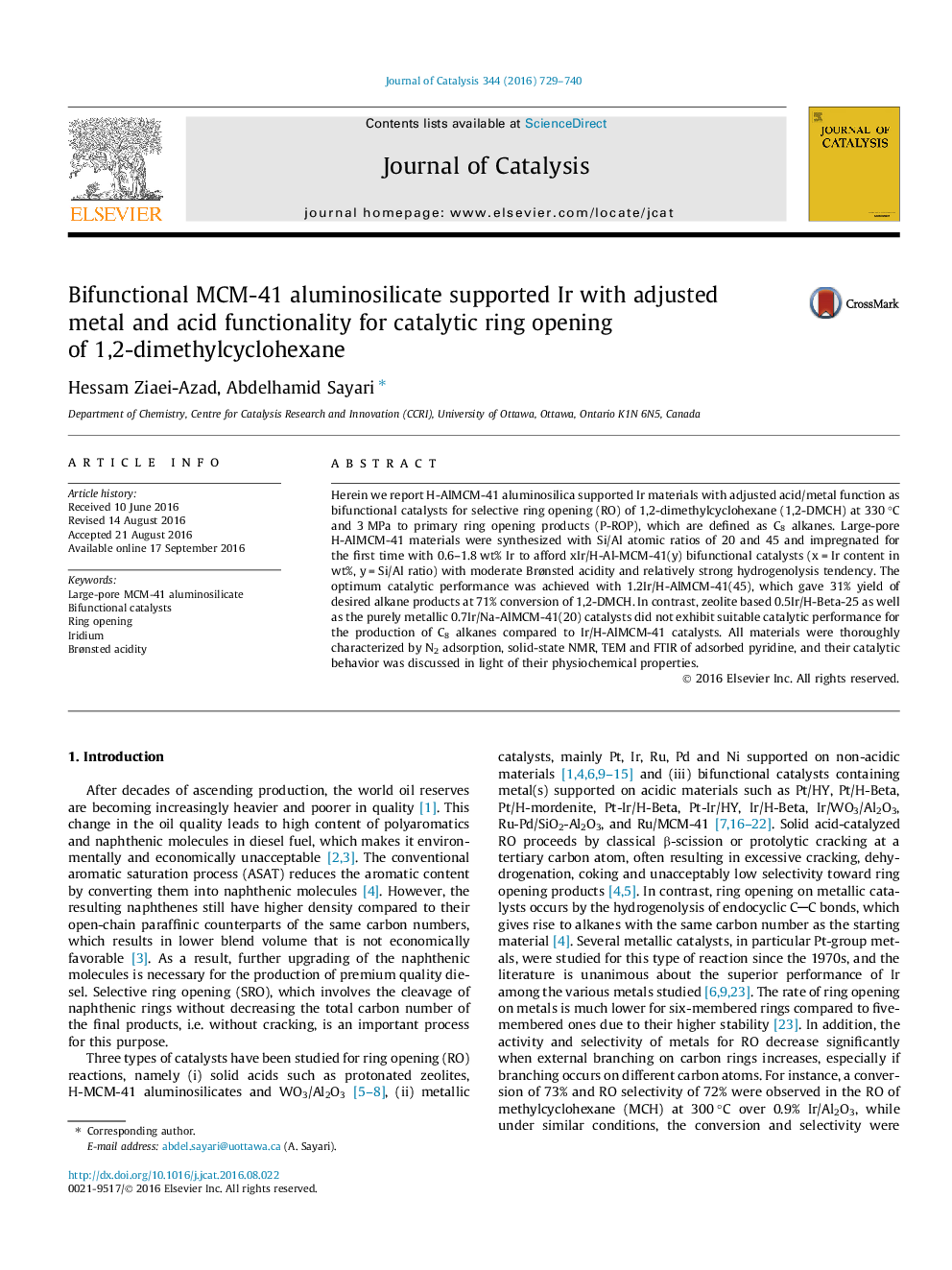| Article ID | Journal | Published Year | Pages | File Type |
|---|---|---|---|---|
| 6455918 | Journal of Catalysis | 2016 | 12 Pages |
â¢Ring opening of 1,2-dimethylcyclohexane was studied with bifunctional catalysts.â¢The optimum Ir/H-AlMCM-41 bifunctional catalyst gave 31% yield of C8 alkanes.â¢Selective RO require moderate Brønsted acidity and strong hydrogenolysis functions.
Herein we report H-AlMCM-41 aluminosilica supported Ir materials with adjusted acid/metal function as bifunctional catalysts for selective ring opening (RO) of 1,2-dimethylcyclohexane (1,2-DMCH) at 330 °C and 3 MPa to primary ring opening products (P-ROP), which are defined as C8 alkanes. Large-pore H-AlMCM-41 materials were synthesized with Si/Al atomic ratios of 20 and 45 and impregnated for the first time with 0.6-1.8 wt% Ir to afford xIr/H-Al-MCM-41(y) bifunctional catalysts (x = Ir content in wt%, y = Si/Al ratio) with moderate Brønsted acidity and relatively strong hydrogenolysis tendency. The optimum catalytic performance was achieved with 1.2Ir/H-AlMCM-41(45), which gave 31% yield of desired alkane products at 71% conversion of 1,2-DMCH. In contrast, zeolite based 0.5Ir/H-Beta-25 as well as the purely metallic 0.7Ir/Na-AlMCM-41(20) catalysts did not exhibit suitable catalytic performance for the production of C8 alkanes compared to Ir/H-AlMCM-41 catalysts. All materials were thoroughly characterized by N2 adsorption, solid-state NMR, TEM and FTIR of adsorbed pyridine, and their catalytic behavior was discussed in light of their physiochemical properties.
Graphical abstractDownload high-res image (257KB)Download full-size image
